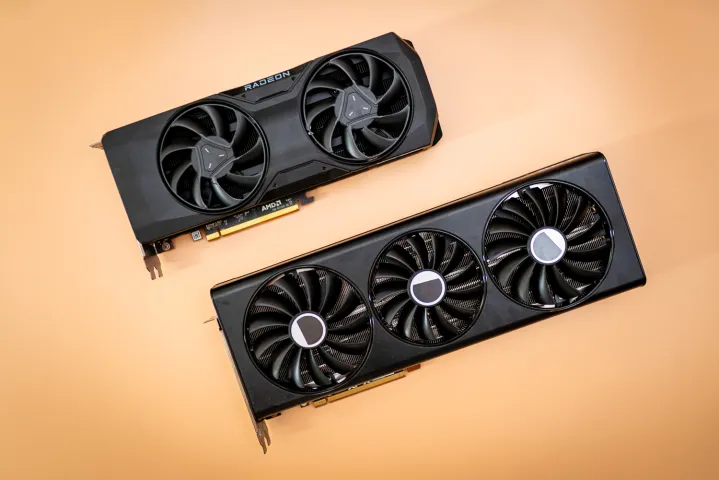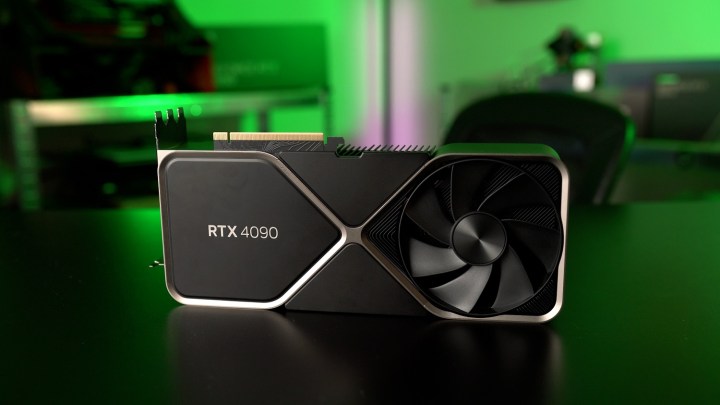The graphics card is one of the most important components in your PC, and arguably it’s also the most exciting part. Beyond the necessities, such as a fast SSD, no single component has the same kind of impact on gaming; GPUs are also crucial in many productivity tasks. Something this important hardly ever comes cheap, which is why buying one of the best GPUs tends to be expensive.
Seeing as buying a new GPU is no walk in the park, it makes sense to try to plan ahead and wonder: How long do GPUs last? For some PC components, the answer is somewhat straightforward; for GPUs, it’s most definitely not. Let’s dive in and go over every aspect step by step.
How long do GPUs last?

In general, a graphics card may last for five to eight years before failing, but this is a very rough ballpark. Most GPUs are replaced before they ever fail, and some may fail before reaching that five-year mark. This timeline can be longer or shorter based on how you use your GPU, whether it gets enough cooling, and even whether you clean your PC often enough. Of course, the quality of the GPU also plays a part.
Some PC parts, like RAM, may last forever. You’ll replace them long before they actually die on you, and even if you use your PC a whole lot, the component will remain largely unaffected by the passage of time. In the case of graphics cards, it’s not quite that simple. What you do with your PC may have a big impact on the longevity of your GPU.
Graphics cards that are used for intense workloads, such as mining crypto, AI-related tasks, or even frequent gaming, tend to wear out quicker than GPUs installed in systems used for office work or the occasional Netflix binge. This doesn’t necessarily mean that those cards will die any minute now, but it does mean that their potential lifespan and performance may be reduced when compared to lightly used GPUs.
During the height of the GPU shortage, seeing mining GPUs up for sale on the secondhand market was very common. Buying used GPUs is a legitimate strategy for saving money while building a budget PC, but cards that are running around the clock for a couple of years are a huge gamble. Some are in decent condition, and some might fail quickly.
Personally, I have never had a GPU die on me before I replaced it. But it can happen even to newer GPUs, especially when affected by hardware problems, such as Nvidia’s melting 12VHPWR connector in GPUs like the RTX 4090. In many of those cases, the GPU will still be under warranty, so replacing it shouldn’t be an issue.
The thing with GPUs is that even if they don’t straight-up die on you, there will come a time when you’ll want to replace them. With each passing year, your GPU will inch closer to becoming obsolete. This is why a better question than “how long do GPUs last” is often “how long are GPUs good for.”
How long are GPUs good for?

Most GPUs are good for around five years before you need to replace them, but there are a few variables that come into play. It depends on what you use your GPU for, how often you use it, how well you maintain it, and most of all, how recent your GPU is.
If all you need is a PC for work and some light entertainment, your GPU can last for years and years before showing signs of aging. There are plenty of people happily using a decade-old GTX 1060 and not batting an eye. However, most gamers who chase high frame rates have strong reasons to upgrade as frequently as every three years. That’s another variable, though — the games that you play dictate the kind of PC you need.
Demanding titles like Cyberpunk 2077 or Starfield can be played on hardware from a couple of generations ago, but let’s be realistic — they run better on newer GPUs. However, if you’re more of an indie gamer and the most demanding games you ever play include Stardew Valley or Spelunky 2, you can get away with not upgrading for a few years.
If you buy a high-end GPU, you can game on high settings for a good while, but AAA titles always drive frequent upgrades no matter what. Every other generation is often a sweet spot for enthusiasts, where you get good value for your money but also maintain stable gaming with high frames per second (fps).
Another thing that drives upgrades is that some tech is limited to certain generations of GPUs. Nvidia is the main culprit here, with its Deep Learning Super Sampling (DLSS) technology. First launched with the RTX 20-series, DLSS is unavailable in any non-RTX GPU, and it can have a huge impact on frame rates. Nvidia did it again with the RTX 40-series, which added DLSS 3 — the best iteration of the tech, also only accessible on RTX 40-series cards. It won’t come as a surprise if DLSS 4 becomes an RTX 50-series exclusive, too.
Ultimately, how long a GPU is good for is different for every gamer. As a rule of thumb, though, for optimal gameplay on newer titles you might want to consider something new every three to five years.
Why your GPU might be wearing out faster

Whether we’re talking about complete GPU failures or just a gradual drop in performance, there are a few things you should be mindful of if you want your graphics card to live long and prosper.
Heat
Modern GPUs are designed to run hot, but that doesn’t mean you shouldn’t care about heat. High temperatures, often caused by running resource-heavy workloads, can be a real GPU killer. These days, anything under 85 degrees Celsius is often considered fine, but this depends on the GPU in question. Running into issues with temps means thermal throttling, and nobody likes that.
Remember that beefy cards like the RTX 4080 Super require plenty of cooling and airflow in the case. In addition, if you feel like your GPU might be overheating, you can undervolt it to give it a bit of a break without missing out on performance.
Check your GPU temperature while gaming to make sure everything is in order.
Usage
As mentioned throughout the article, what you do with your GPU may have a direct effect on its lifespan. It’s not that running your GPU for many hours per day will kill it, but rather that it’ll wear out faster. This can result in worse performance over time, but mostly, you’ll just notice older GPUs running worse in newer games due to higher requirements.
Maintenance
Keeping your PC in good health also helps your GPU. It’s not just about running a good cooling setup but also about cleaning your PC once every few months. This includes removing the GPU and cleaning its fans. If you haven’t done it for a while, this alone might help you drop temps by a few degrees.
Signs of GPU failure

If your GPU is alive but underperforming, it’s easy to spot. Frame rate drops, stuttering, and being unable to drive up the settings without crashing are some of the signs that your GPU is having a hard time. But what about when it’s approaching complete failure?
Some of the signs of a GPU being close to dying include:
- Graphical artifacts, such as strange lines, blocks, distortions, or texture issues
- Crashes
- Freezes
- Blue screens of death (BSODs)
- Driver issues (try to reset your graphics driver if that might be the culprit)
- Overheating and loud fan noise
- Rendering problems
- Unexpected shutdowns
- No display on boot
These are some of the things to look out for, but they don’t all mean that your GPU is toast. It could just be struggling, or it could be something else entirely. Try to troubleshoot and figure out the root cause of the problem before spending a small fortune on a new graphics card.
Services Marketplace – Listings, Bookings & Reviews
